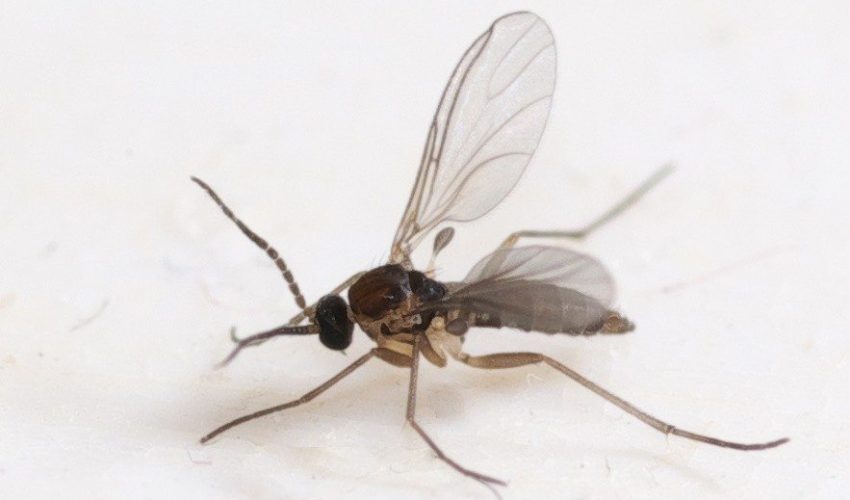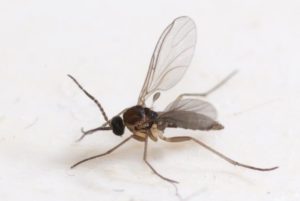
How to Get Rid of Fungus Gnats

picture from https://www.gardeningknowhow.com/plant-problems/pests/insects/fungus-gnats.htm
Since bringing your houseplants indoors for the winter, you may have noticed the presence of gnats in and around your houseplants. While they may appear to resemble fruit flies, these are more than likely fungus gnats. While the adult gnats are not harmful to you, your family, or your houseplants, they can be quite a nuisance. Continue reading to learn how to get rid of fungus gnats.
Why are they in my Houseplants?
When the female fungus gnats lay her eggs, she deposits them into the first inch of the soil. The larvae live in the top one to two inches of soil before becoming adults. While living in the soil, they feed off of the decaying matter. The decaying matter may consist of your houseplant’s roots. While the adult gnats are not an issue, the larvae may harm your plant. So how do you get rid of them? The trick is to eliminate their food source and break their life cycle.
Amend your Watering Routine
The first step in eliminating fungus gnats and preventing them in the future is to change how you are watering your houseplants. Since the gnats are feeding off of the decaying matter, chances are, you are watering too much. Instead of watering from the top of the plant, try watering from the bottom up. If possible, move your plants to the sink or bathtub. Fill the water so that the first 3rd of the pot is submerged. Allow the plants to sit in the water for about 20 – 30 minutes or until the plant becomes heavy. This method allows the plant to absorb the water through its roots at the bottom of the plant while keeping the top one to two inches dry, thus eliminating the decaying matter and killing the larvae.
Top Dress the Soil
While some plants are easy to move, others are not. For the larger houseplants, you may only be able to water from the top. If this is the case, add a top dressing to your plant. You can add decorative rocks, pebbles, and moss. This will make it more difficult for the adult fungus gnats to lay their eggs.
Systemic Insecticide
Once you have adjusted your watering routine, it is always a good idea to add a systemic insecticide to the top layer of your plant. Systemic insecticides are absorbed through the plant’s roots and transported throughout the plant’s tissues. Whereas a topical insecticide works only on the area at which it was applied, systemic insecticides are located in every part of the plant. Because of this, the plant is protected for a couple of months at a time, at a minimum! Please note that when using a systemic insecticide, you will have to periodically water from the top, as the granules that hold the insecticide are activated by water. The insecticide is then transported to the plant’s roots by the water.
